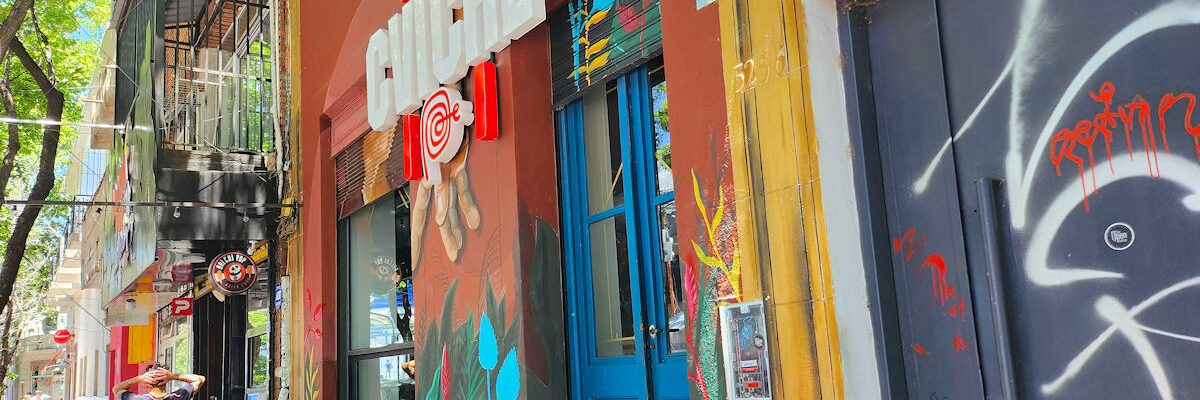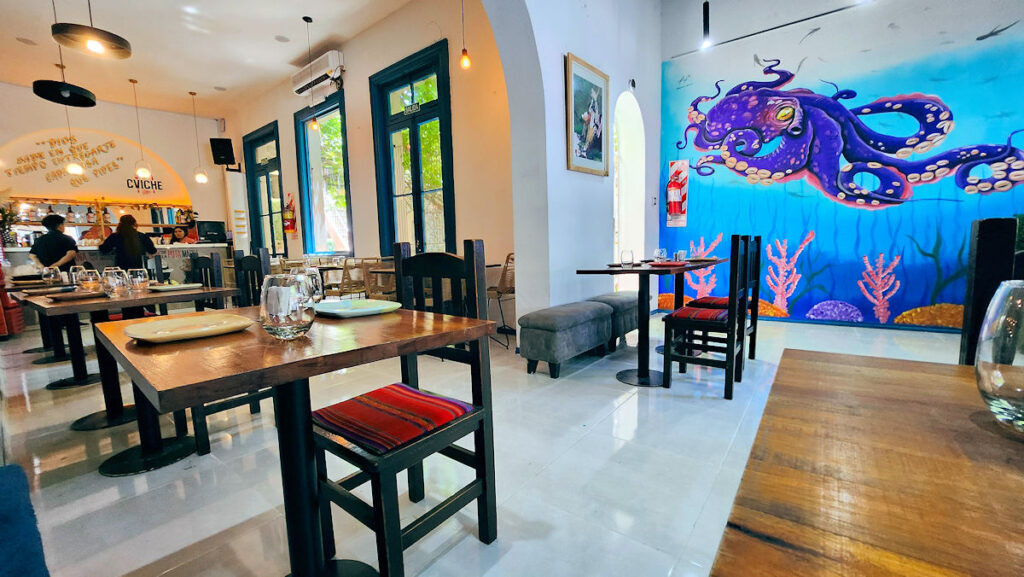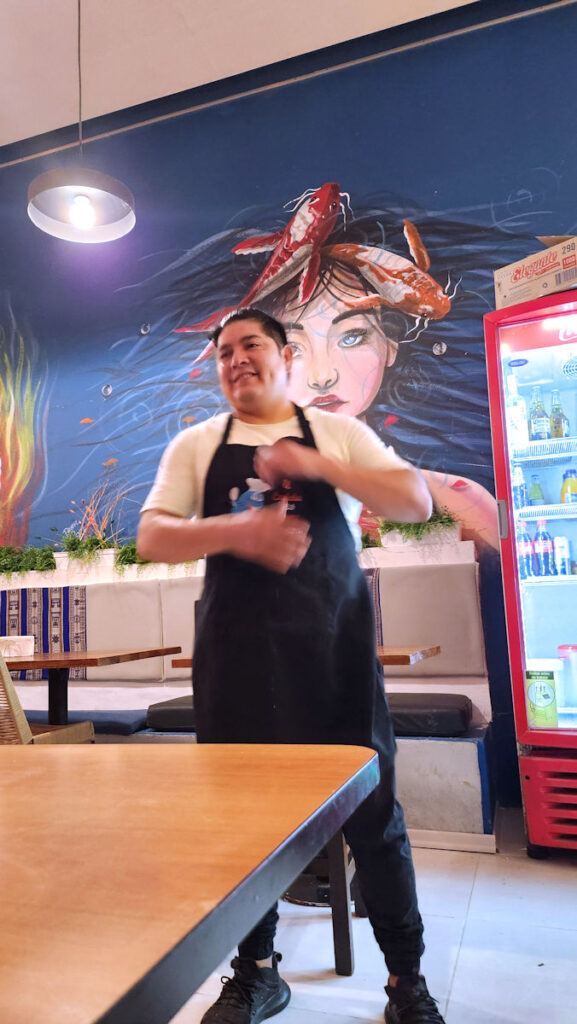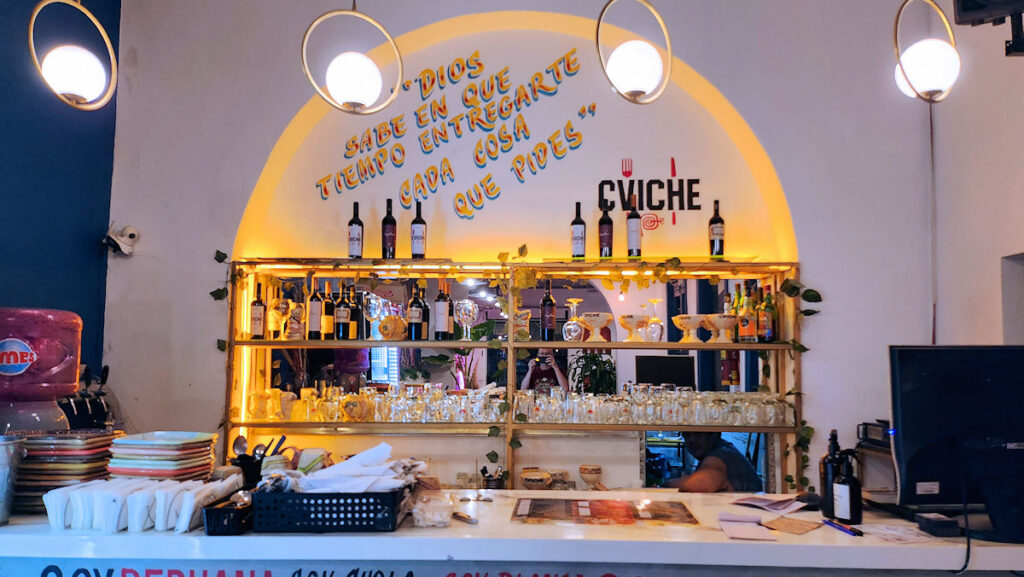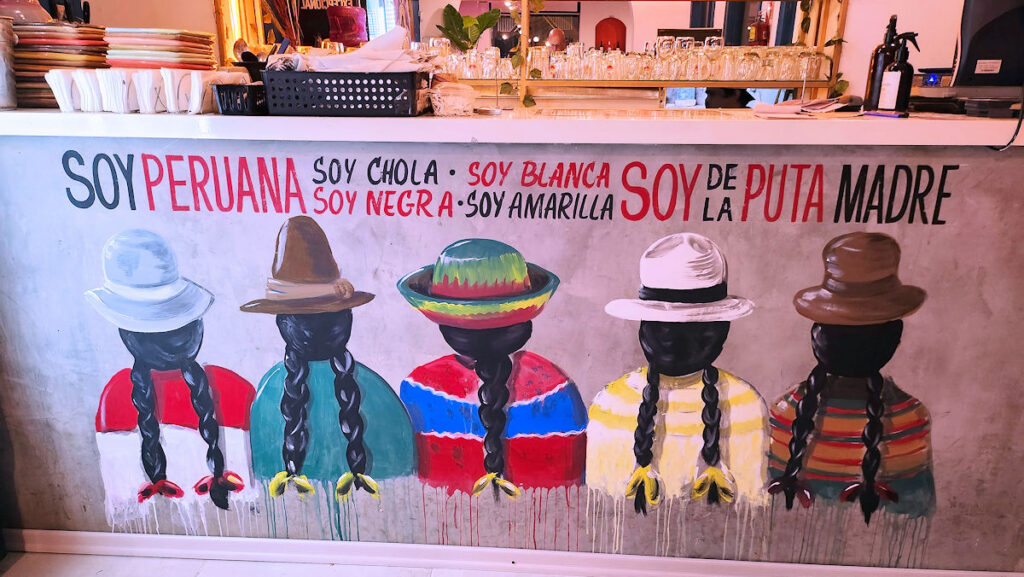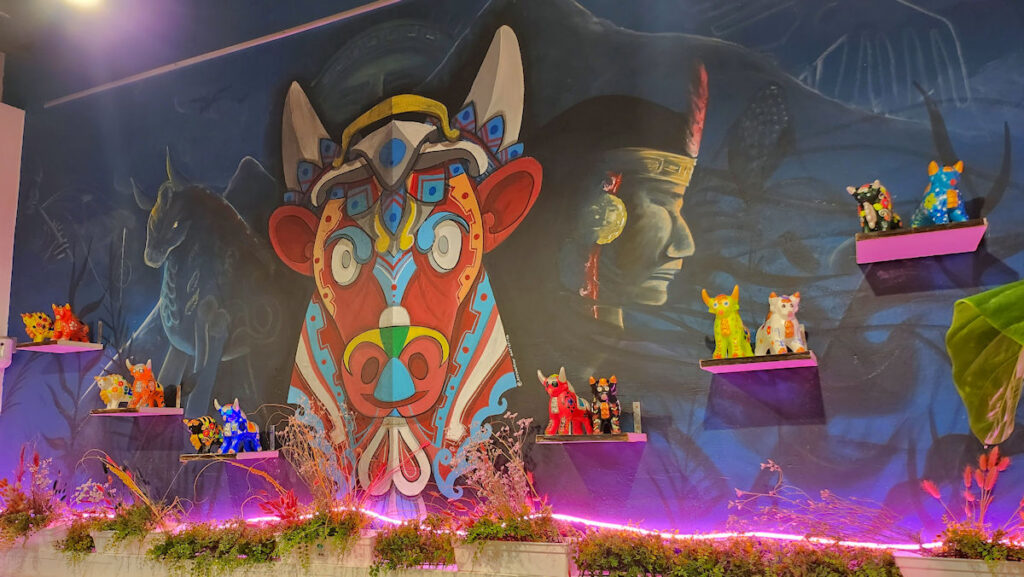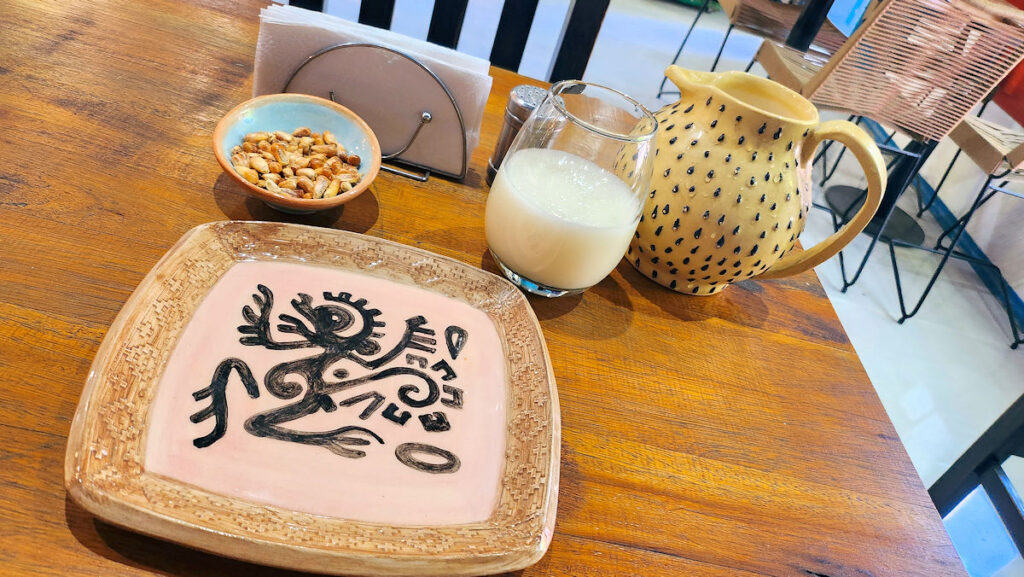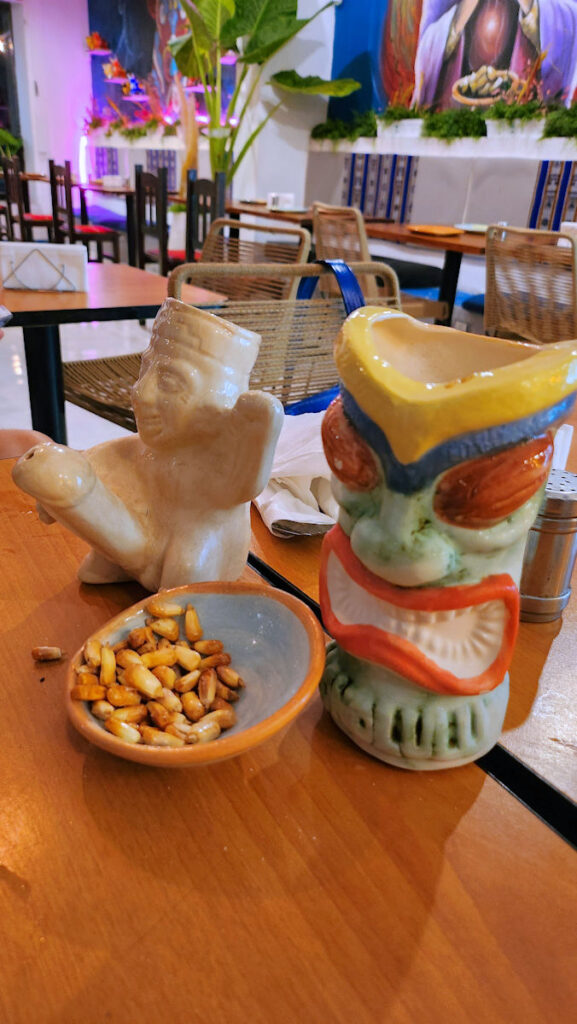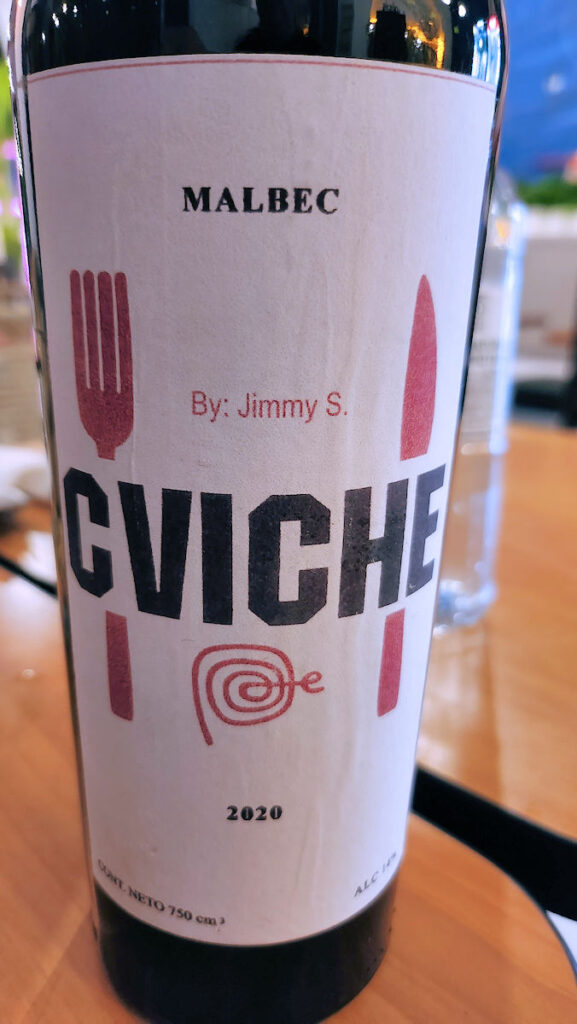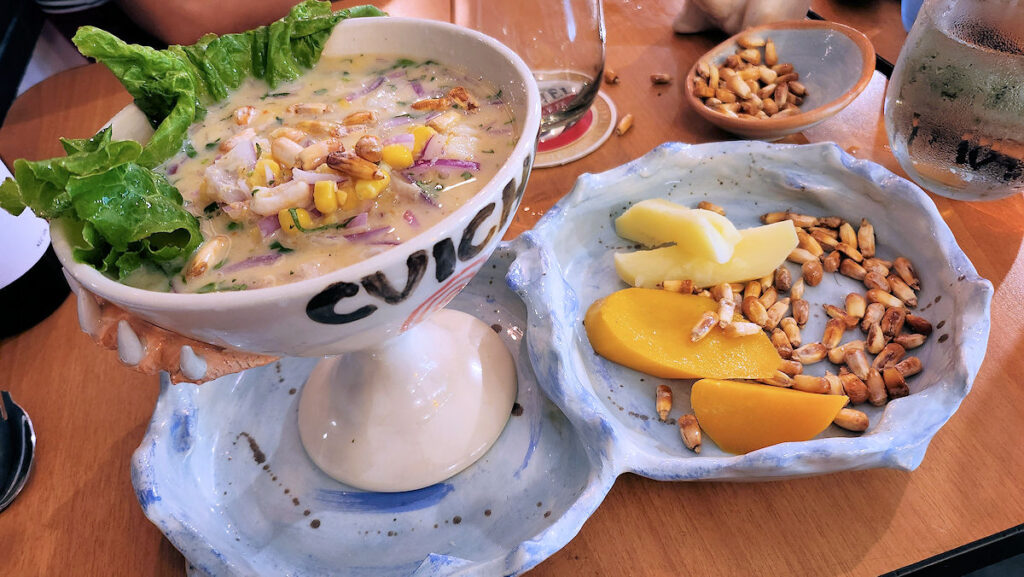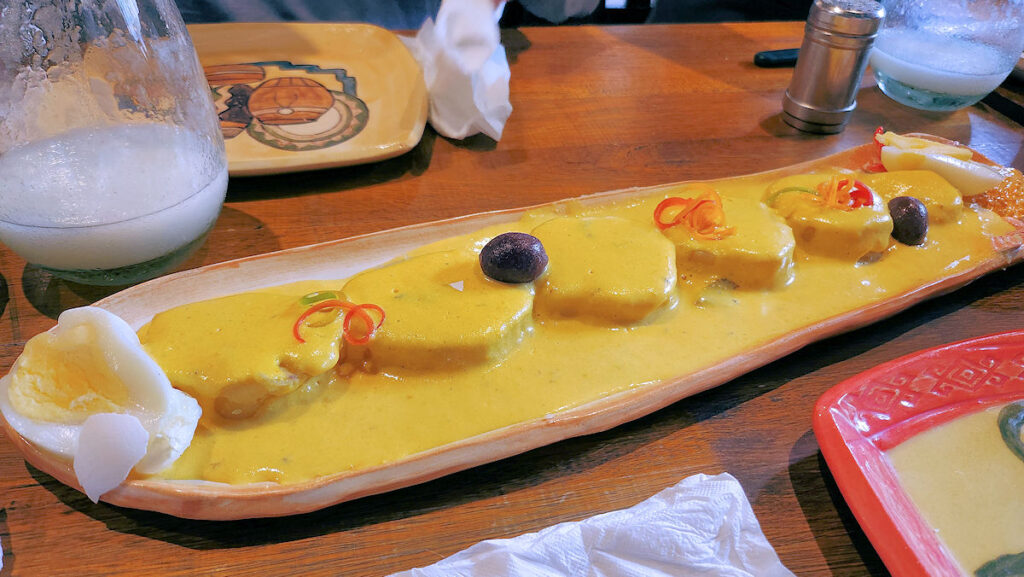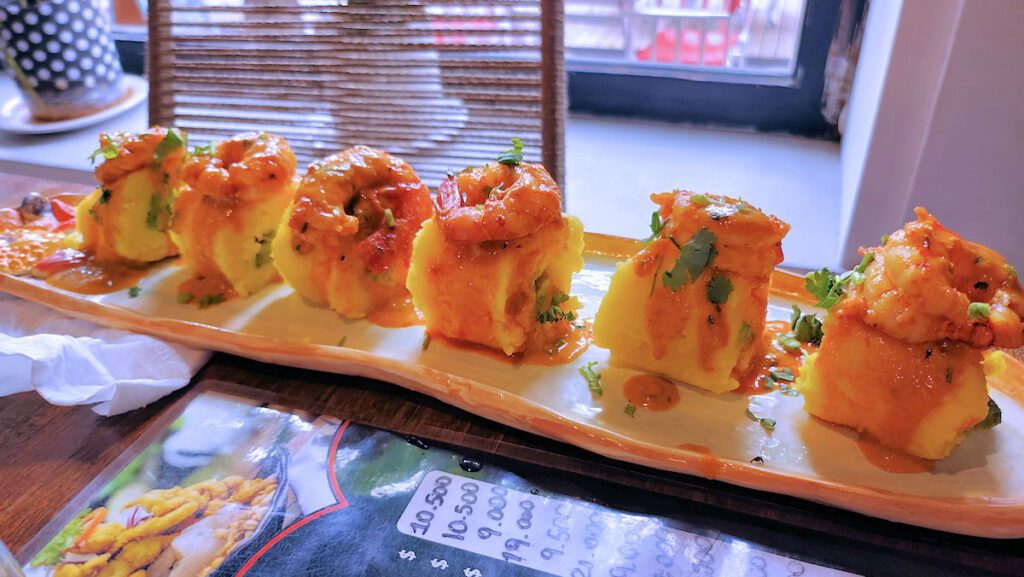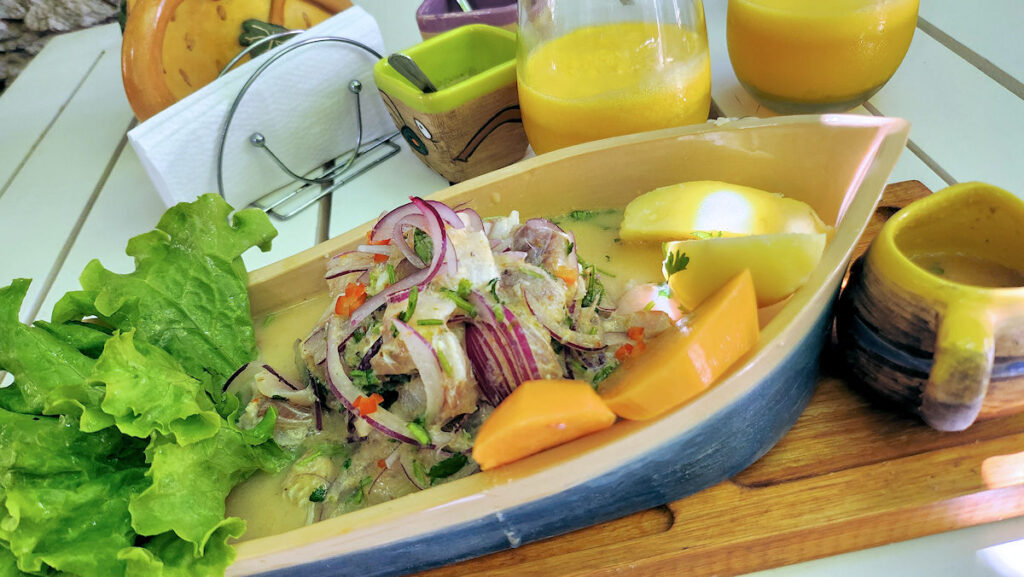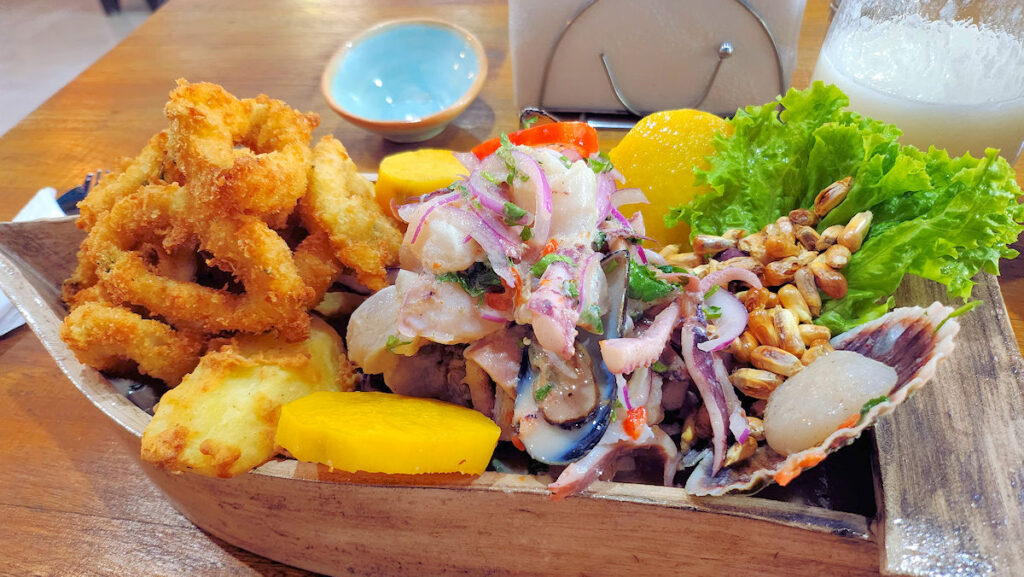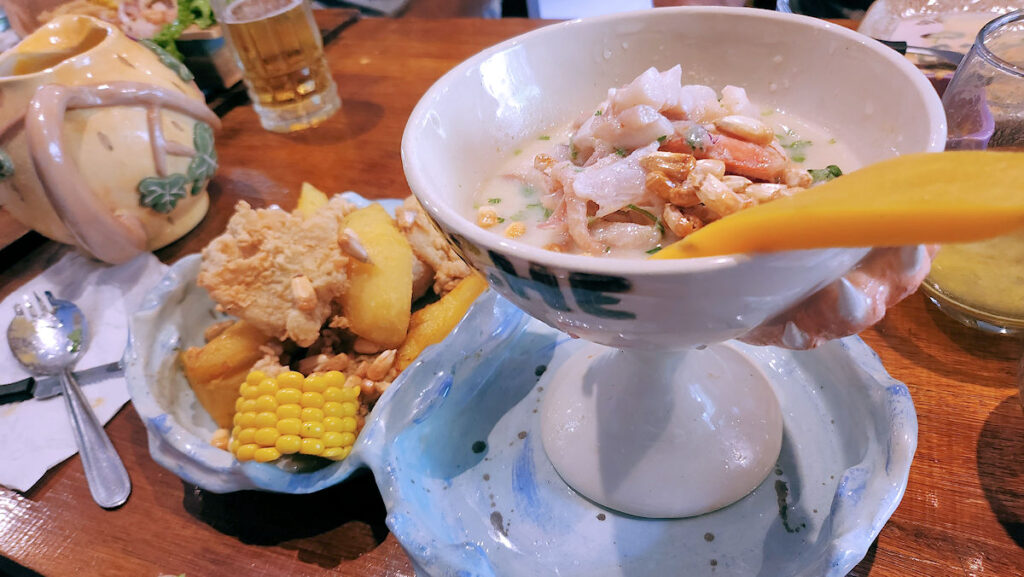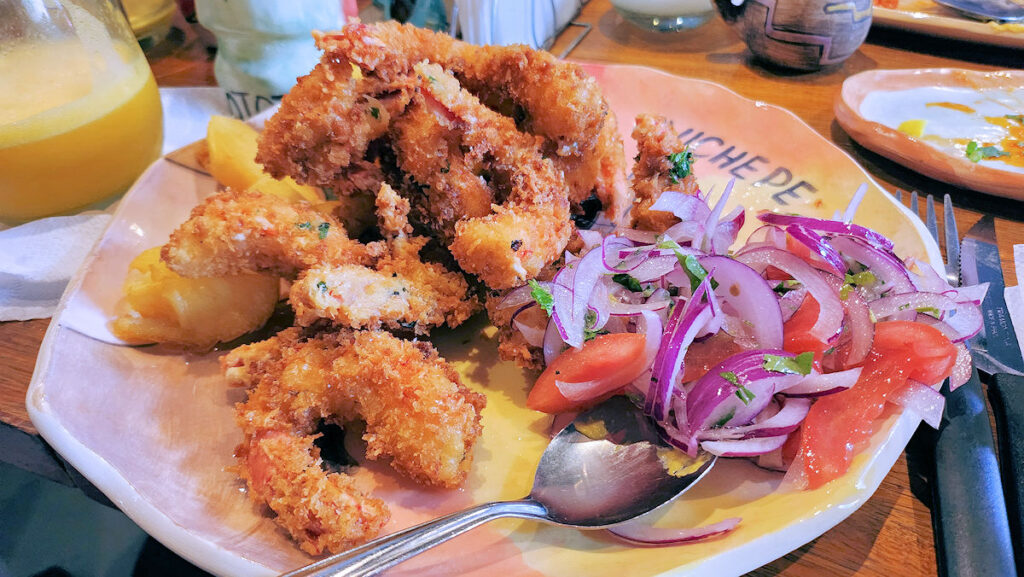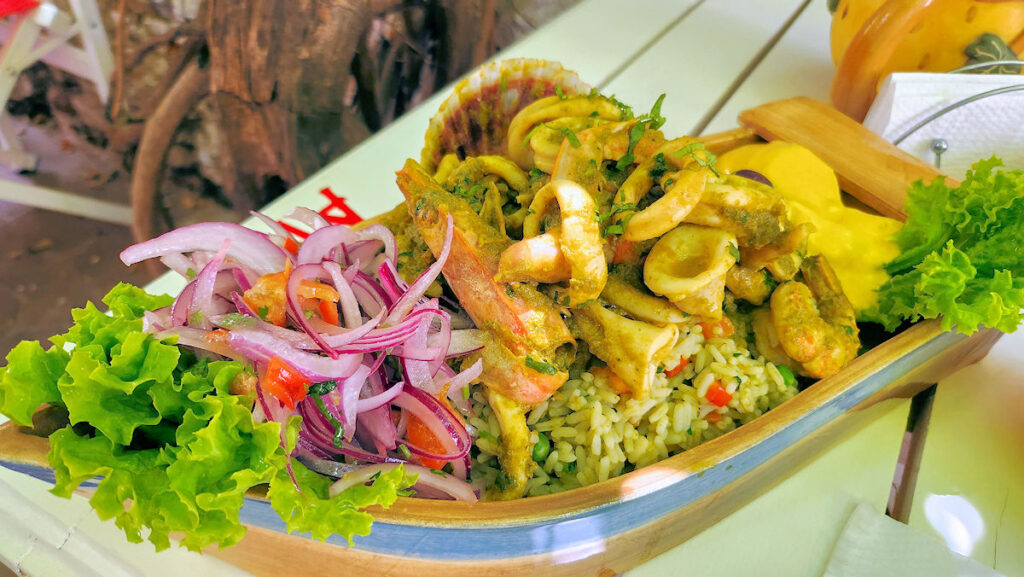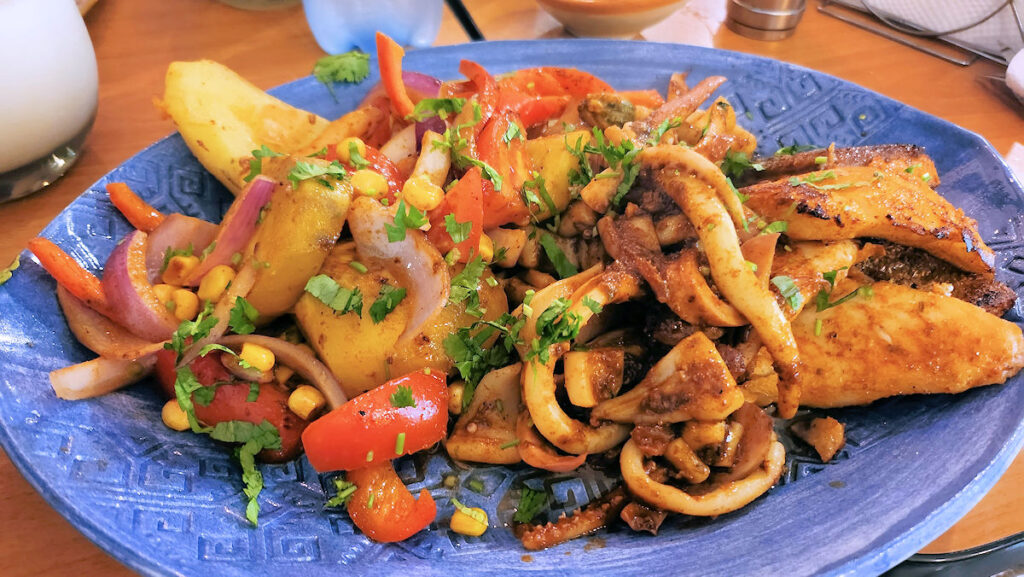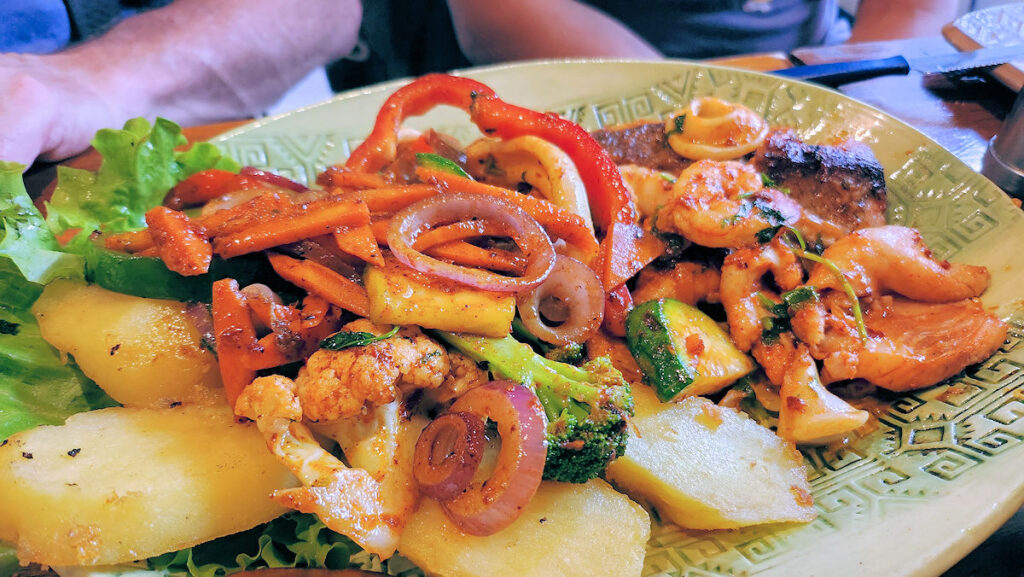Flavor, quality, and intentional misspelling.
I was just wandering down the street one afternoon in late December, feeling a bit peckish, and suddenly saw this Peruvian restaurant. Now, I’ve been down this block many a time, and I know it wasn’t there the last time. And Peruvian restaurants, for those who don’t know me, are kind of a passion – I’ve set out to try every one of them in town, and that numbers somewhere just shy of 300. Opportunity knocks!
And, it turned out, I wasn’t wrong – this was literally day two of the place being open. It was not, it turns out, my last visit, as this place has leapt into my top five for classic Peruvian cooking in town, and Henry and I have been back several times over the last month or so. And, just this week, I arranged for my biweekly social dining group, the Roving Ravenous Horde, to lunch there, with eight of us at the table.
It’s not a huge space, but, it turns out, it’s a new “branch” of a smaller restaurant of the same name, Cviche.pe, in barrio Villa Santa Rita on the far west side of town. I hadn’t heard of that one either, which is surprising given that it’s been open for almost three years. But, Honduras 5256 in Palermo is far more convenient, and definitely more visitable for the average visitor!
There was some discussion when Henry and I first went, as he and owners Jimmy and Jennyfer share one of their last names and are all from the same region. Henry is from Trujillo, they are from Chimbote, about 80 miles (130 km) apart. But, no family connection was found, though new friendships were formed.
“God knows how much time until each thing you ordered arrives.”
“I am Peruvian. I am mixed. I am black. I am white. I am yellow. I am amazing.”
The last is worth a momentary tangent. Literally, “Soy de la puta madre” translates as “son/daughter of a bitch”. Why do we not have the feminine construct in English? Are there not strong, powerful, daughters of bitches out there? But, much as in English, the phrase isn’t intended to be literal and disparage one’s mother, but is an affirmation of power and confidence.
The space is painstakingly detailed, with beautiful artwork from local mural artist Daniel Pezza.
And that holds right down to the well-chosen, interesting tableware. Which, by the way, includes that this might be the first restaurant I’ve ever been in where the spork is the silverware implement of choice.
Some of it can be a bit… quirky. And yes, the “glass” to the left is drunk from the end of the penis. Amusing on its own. Slightly more amusing to watch a parent at another table trying to approach her cocktail in front of her husband and children.
The beverage selection is a tad limited, the only thing I’d really fault at Cviche.pe. There are several different fruit juices on the menu by the pitcher, but to date, they’ve only ever had the passionfruit and guanabana ones available. The only wines are a sweet Chardonnay, and a Malbec, made under the restaurant’s own label by Finca las Garzas winery in Mendoza, a small boutique operation run by a customer of the original location of Cviche.pe. And, while there are several beers listed on the menu, they seem to only have a couple of them at any time. It’d also be nice to see them offer something like Cusqueña beers, a well known and well liked Peruvian beer that’s readily available in town.
The raison d’être for Cviche.pe is seafood, mostly cured seafood, and they offer a variety of different ceviches and similar dishes, along with quite a few cooked seafood dishes. There are some non-sea based dishes on the menu, but only a couple, and I have yet to see anyone order one, though I’m sure it must happen.
Leche de tigre, one of my favorite go-to dishes. Literally, “tiger’s milk”, a Peruvian specialty that is closely related to ceviche. At its simplest it is merely the juice found at the bottom of the receptacle used for mixing up the ceviche – the citrus, salt, herb and chili mingled with the juices drawn off the seafood, and served up in a small glass ranging from shot glass size on up, and oft-times used as a hangover cure. But it can also be what amounts in many ways to a soup version of ceviche – more liquid than fish and shellfish, but all the same ingredients. It is, to my mind, the essence of Peruvian coastal cookery – the fresh flavors of the sea blended with all the spices and herbs that make the cuisine what it is.
This version is huge. It’s a meal in itself. Packed with fish, bits of calamari, red onion, corn, and cilantro, and served up with potato, sweet potato, and cancha, a salted, fried corn of a type that doesn’t pop (a staple on Peruvian restaurant tables), to mix in as you choose. On ordering, as at many Peruvian restaurants, you’ll be asked how spicy you want it – “not, regular, hot” – I went with hot and they didn’t stint on the rocoto chili. That was sweat-inducing. And, absolutely delicious.
Ordering up some papas a la huancaina to share for the table. Papas a la huancaina are a traditional cold or room temperature dish that is found on tables throughout Peru. The classic huancaina sauce is made from a puree of ají amarillo – yellow chili, with milk, fresh cheese, walnuts, and stale bread as a thickener. The potatoes are boiled, peeled, cooled, and sliced and then topped with this rich, thick sauce. When done right it’s fantastic as a side dish. When done not so right, it can be a bit off-putting. This version is one of the better ones we’ve had. As a note, Cviche.pe doesn’t use walnuts in theirs, avoiding concerns over nut allergies.
A causa is another traditional starter. I describe it as cold mashed potatoes flavored with olive oil, ají amarillo (yellow chili, same as above), lemon juice, and salt, as opposed to butter and milk. Most classically, it’s served as a sort of bed of the potatoes, topped with tuna or chicken salad, not all that different from any mayo-based version other than generally with a hit of chili and cilantro. Here, the potato encases slabs of fresh avocado, and the whole thing is topped with beautifully sautéed and spiced prawns.
A classic fish ceviche is just as good, and again, a large portion. Interestingly, while most “better” ceviche spots here use lenguado, a flatfish in the sole and flounder world – here a particular variety called the Brazilian flounder (that varies by part of the Spanish-speaking world), Jimmy chooses to use the salmon blanco, literally white salmon, but actually the Brazilian sandperch. He finds it closer to the fish used in Chimbote for ceviches, and, it’s less expensive than lenguado tends to be.
Also, an excellent version of a famed Lima version of ceviche, the carretillero, literally meaning forklift. But, it refers to the Limeño street vendors who serve ceviches from carts, loaded up with all the ingredients for not just the ceviche itself, but the fried calamari and potatoes that accompany it. It’s a mixed fish and shellfish ceviche. And you get the interesting mix of hot and cold on the same plate. Hot fried calamari dunked into cold leche de tigre is a delight.
One note, and it apparently comes up for Cviche regularly, is that the ceviches are not served icy cold as they are at many places. They’re cold, they’re just not that cold. And it’s a choice – Jimmy asserts that that’s the proper way ceviche should be served, if it’s too cold you lose the vibrancy of the flavors. He’s right, and it works, but it also surprises some people.
There are also “combo” plates that give you one cold and one hot dish for a reduced combination price, albeit there’s also a reduction in the quantity. Here, a mixed fish and shellfish ceviche paired with chicharrón de pescado, fried fish. The ceviche as good as the others. The fish well cooked, though we though the batter could use a little more seasoning.
Kind of like this… the breading on the chicharrón de langostinos, fried prawns, is an herbed and spiced breadcrumb, crunchy, with delicate, perfectly cooked shellfish inside, and a red onion and tomato salad – a common accompaniment in Peruvian cooking for fried dishes. Bread your fish in that!
Not to eschew the hot side of the menu, we’ve also ordered their arroz con mariscos – rice with shellfish. It comes in two versions, and we went with the norteño way, which has, to our minds, more complexity of flavor than the more well known Limeño version. Jammed with seafood, beautifully cooked, and a well seasoned cilantro and vegetable rice, this is one of the best ones I’ve had in town. The accompanying papas a la huancaina are a nice addition.
And, the parrilla marina, or marine grill. Quite tasty, with beautifully spiced and cooked fish and shellfish. At the same time, slightly disappointing, as I swear that the menu lists the dish as containing salmon, calamari, jibia (Humboldt squid), prawns, and vegetables, though what arrived was a mix of salmon, sandperch, calamari rings and tentacles, and nothing else. Kind of missing the prawns, or even shrimp, and the tentacles of a regular squid are kind of thin pencils, versus the thick jibia tentacles, more akin to octopus. It was good, but not what it could have been.
So the following week, with my lunch group, the same dish, but done up right. First, a mix of vegetables, not just some onions and tomatoes – here, zucchini, broccoli, cauliflower, and peppers, and the seafood mix is as described. A conversation with Jimmy, and an apology for the meager version the previous week, which he hadn’t cooked, but still felt responsible for. As any owner should.
Pricing is quite reasonable for a Peruvian restaurant of this quality, especially one located in the heart of Palermo. Ceviches come in at anywhere from about $7-9, hot plates, $7-11, and appetizers for $5-7.
Overall assessment, this has quickly become one of my, our, favorite “homestyle” Peruvian restaurants. Homestyle in the sense that it’s not fancied up food, it’s classic dishes, made and pretty much served the way you’d make them at home. No Japanese influences as in the ubiquitous nikkei cooking of many a modern Peruvian restaurant. Just good, honest food, at a fair price, and a “Highly Recommended” from me.
